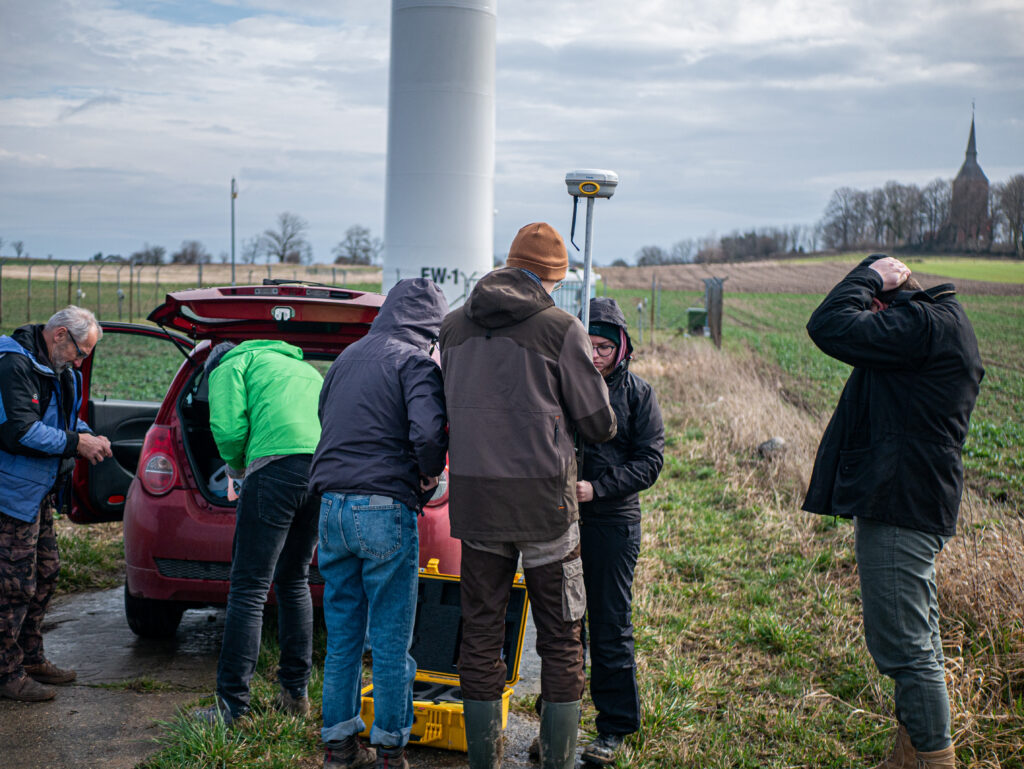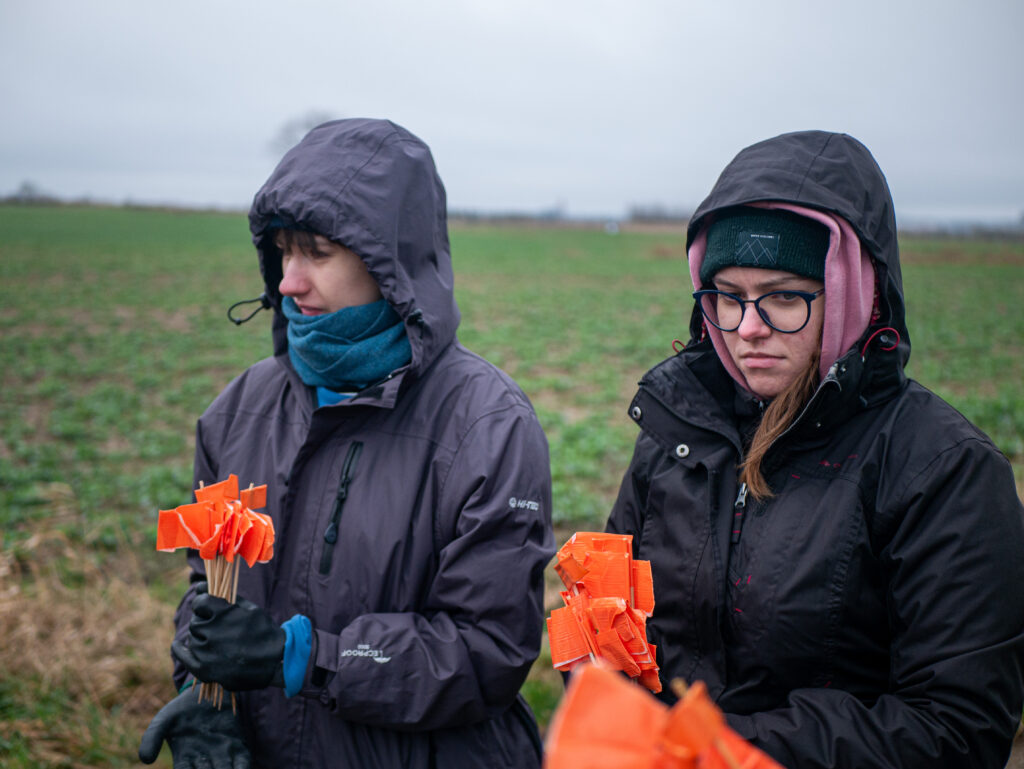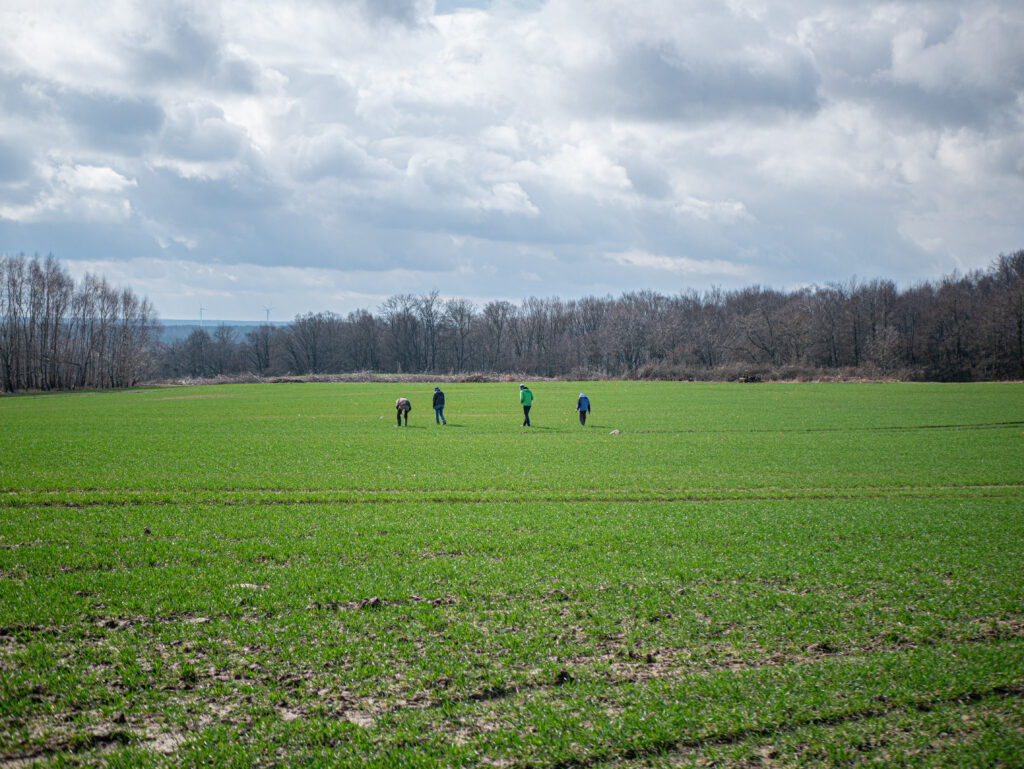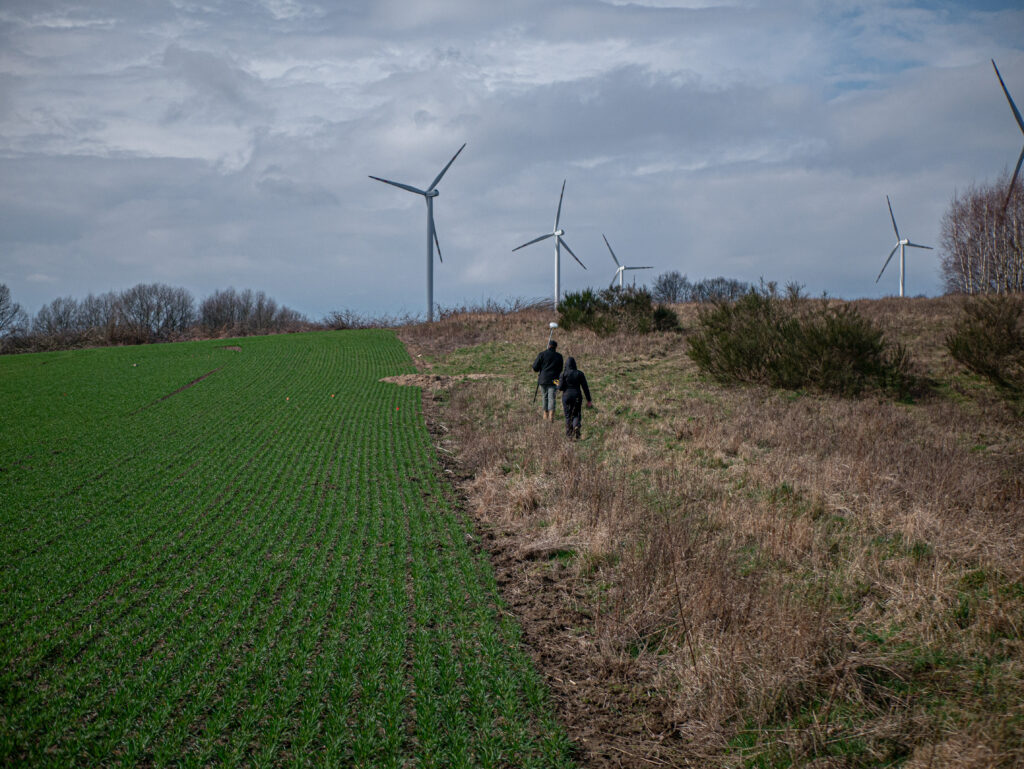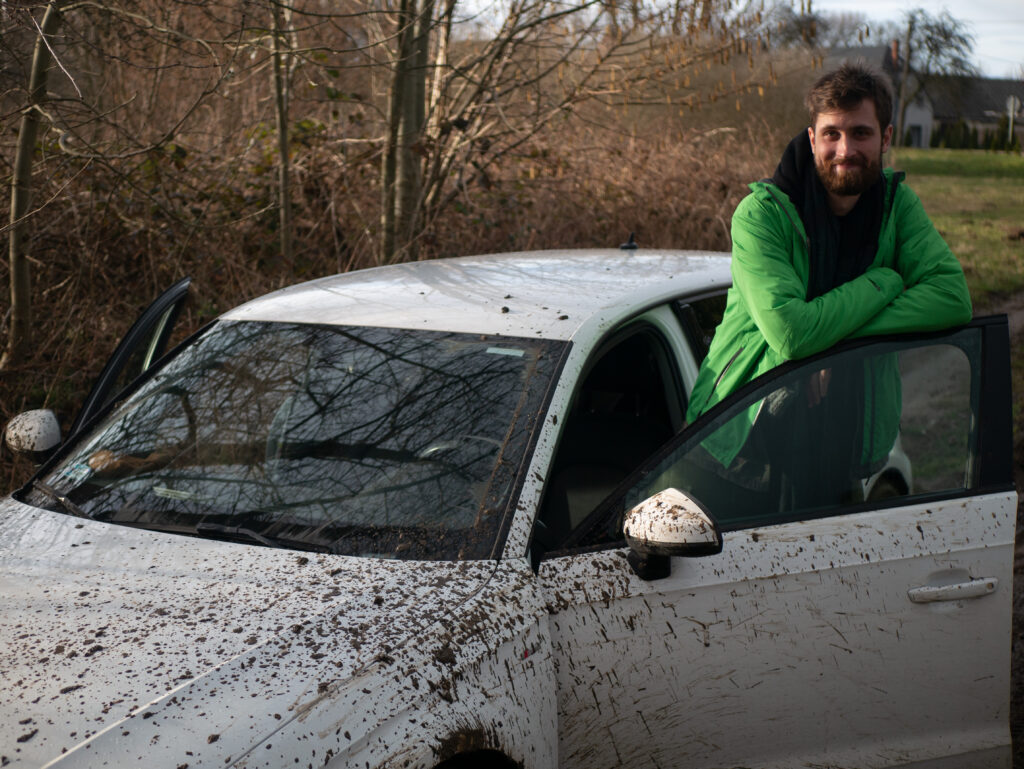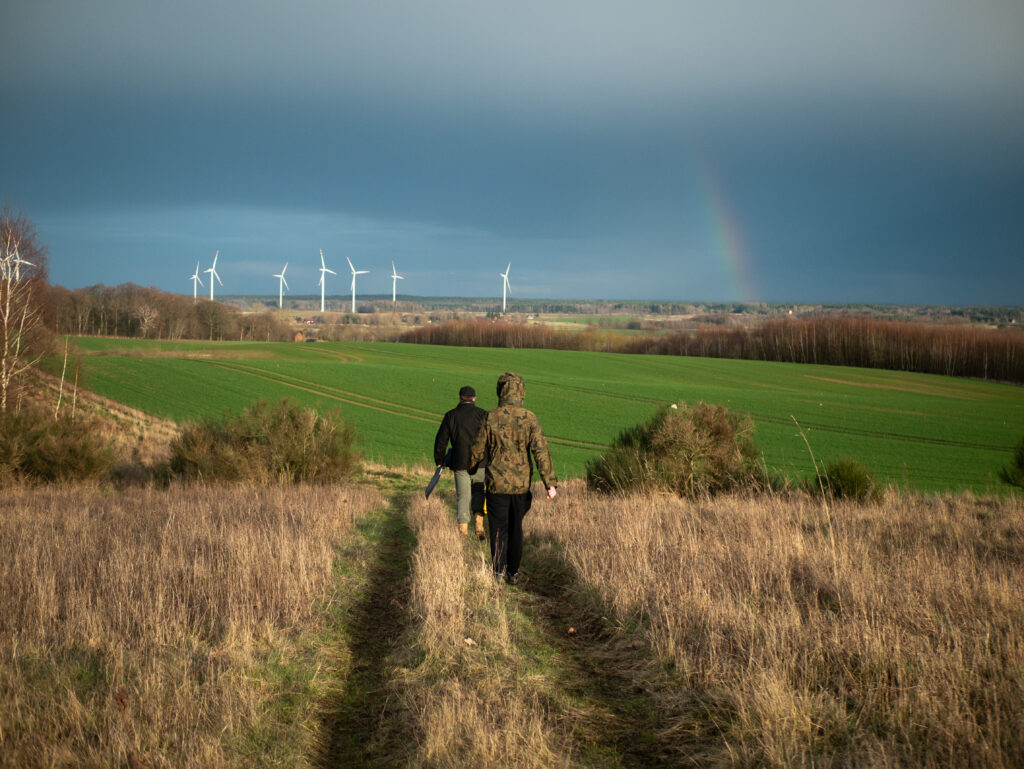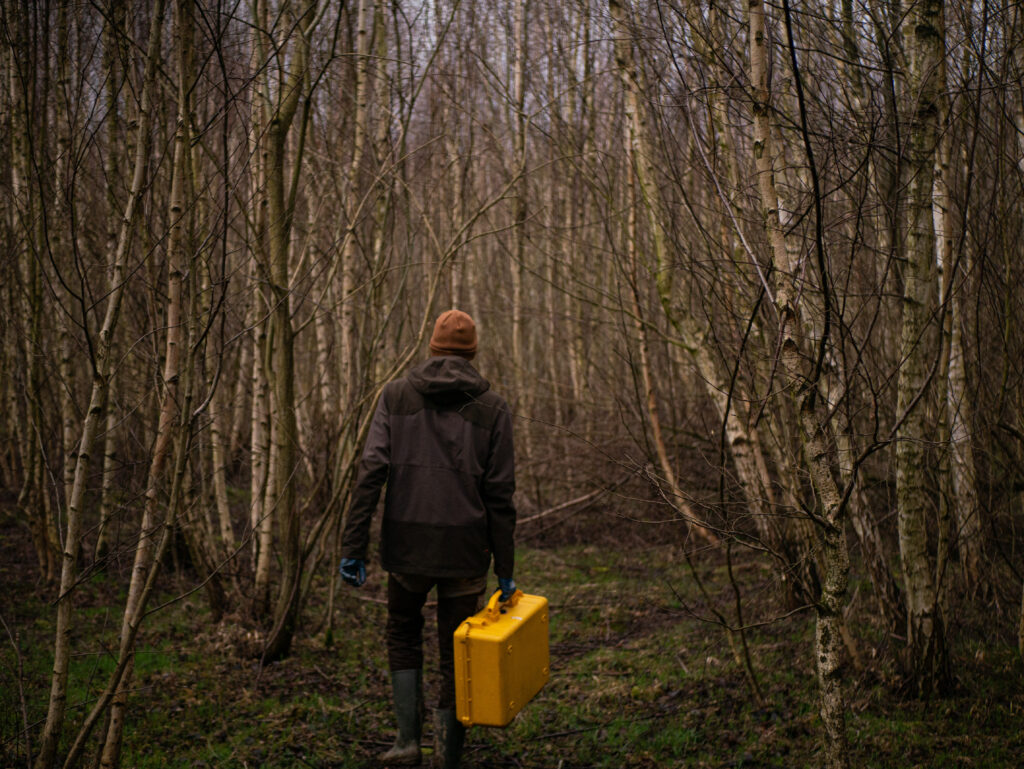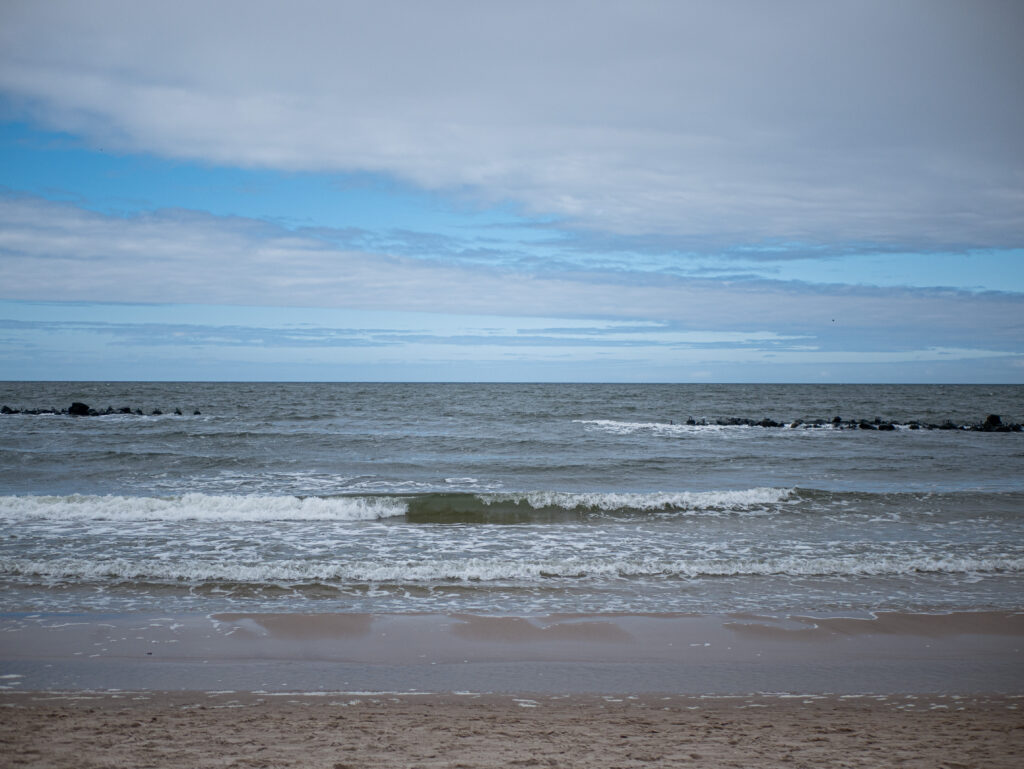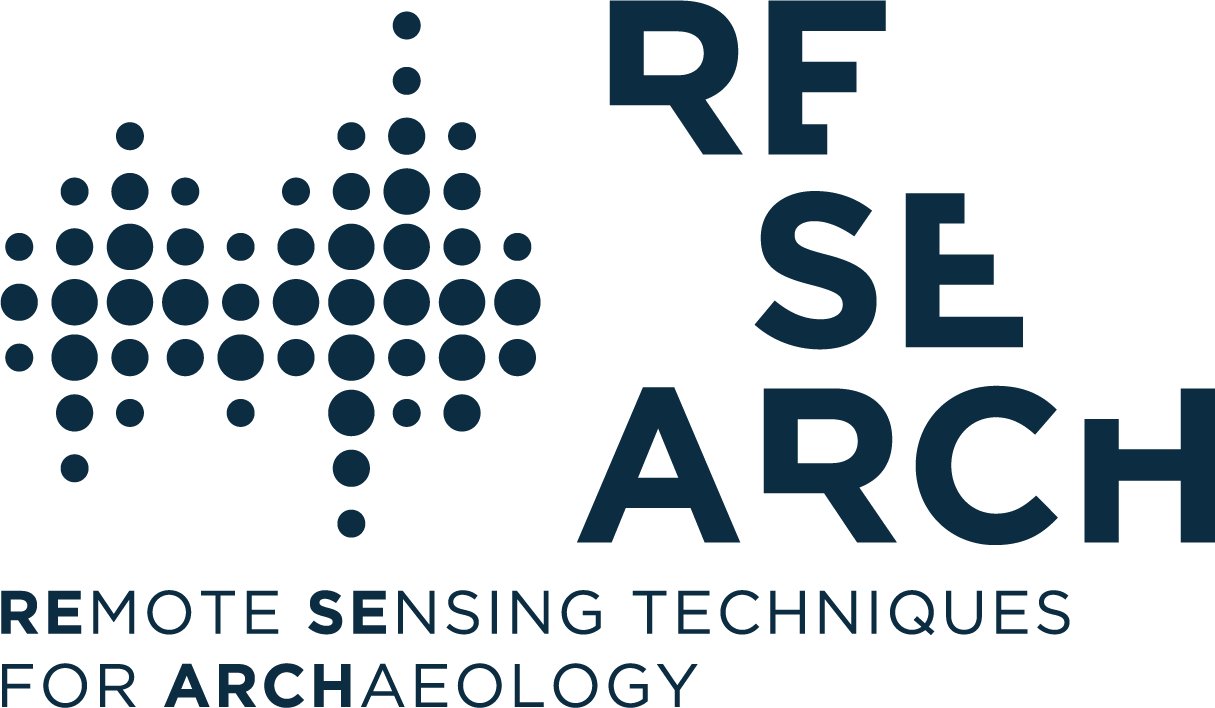The AMU team (Włodzimierz Rączkowski, Filip Wałdoch, Aleksandra Froehlich, Julia Lipowy, Paweł Dmitrijew, Mikołaj Kasprzak and Jan Czeski) returned to Cisowo and Dzierżęcin on March 24th – 26th to conduct their last survey on these sites. This year the weather fulfilled a well-known Polish proverb which translates roughly to: “In March like in a pot”. We experienced mainly wind and clouds, which gifted us sometimes with rainy snow, snowy hail and once heavy rain, all separated by short periods of clear sky and sun. These obviously “helpful” conditions turned the soil into gluey mud which hampered our research greatly. Despite these adversities, we managed to finish the survey on time, guided by Prof. Rączkowski (Fig. 1).
We (well, except those of us who participated in the survey for the first time) waited the whole year to be finally able to return to Cisowo and Dzierżęcin. Hundreds of vividly orange flags were prepared. The clear focus on our faces was a mere physical echo of our deeply motivated souls (Fig. 2).
As previously, we used the RTK GPS to record every visible artefact found and marked with the orange flag during our field survey(which each of us also recorded with a portable GPS) (Fig. 3,4). Sadly, but in truth after the previous season’s “failure” in this area unsurprisingly, this time we also have not found any artefacts marked with a colourful paint during the previous surveys – wrong method of marking or formation processes?
The dedication of some of the participants must be exceptionally approved. The most honourable of us willingly offered to devote to the cause their material possessions, such as cars etc… Mikołaj (Fig. 5) with his unearthly driving skills and his loyal automobile saved us from digging our way out of the road supposedly leading to the survey site in Dzierżęcin, which we relentlessly yet ineptly tried to surmount. However, later we decided to achieve our goal on foot and succeeded (Fig. 6).
Nevertheless, this way we proved that the previous manner of getting there, namely breaking through the forest, was surprisingly the easier and safer one (Fig. 7). However, we all felt that the hardships made us stronger and better researchers. Our expedition concluded with a visit to the Baltic shore – strangely though, none of us was eager to use the opportunity and swim (Fig. 8).
Now it is time to conduct a comprehensive analysis of the data collected throughout three seasons of surveying, hopefully being finally able to answer the profound question of how erosion and ploughing influence the dispersion of artefacts.
Text by Jan Czeski, Photos by AMU Team.
